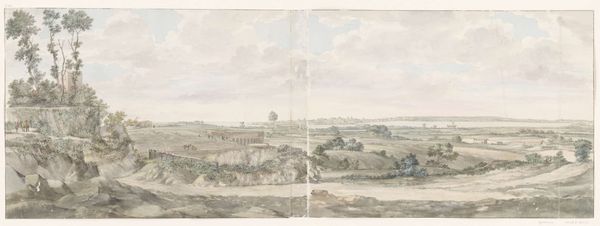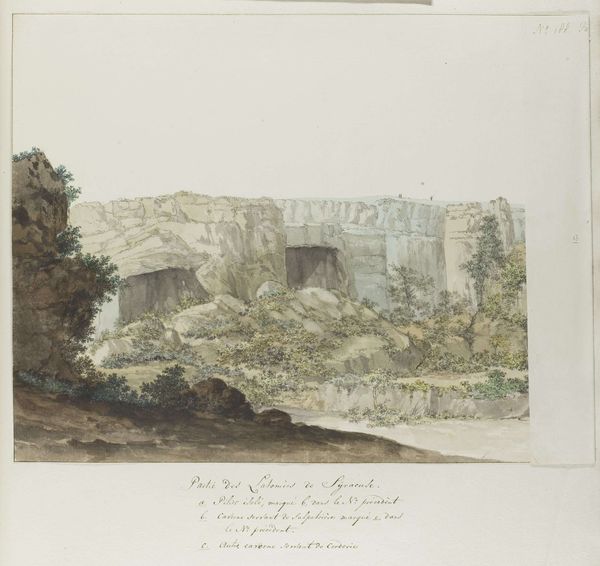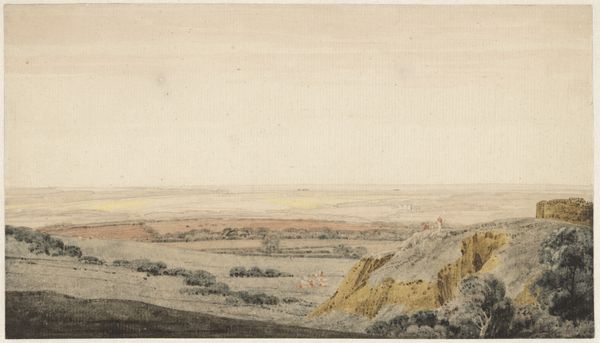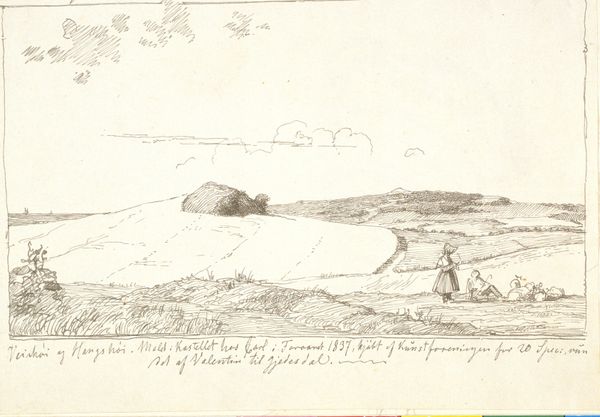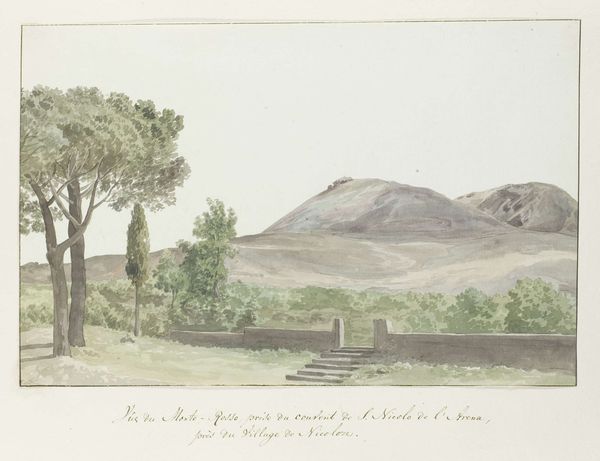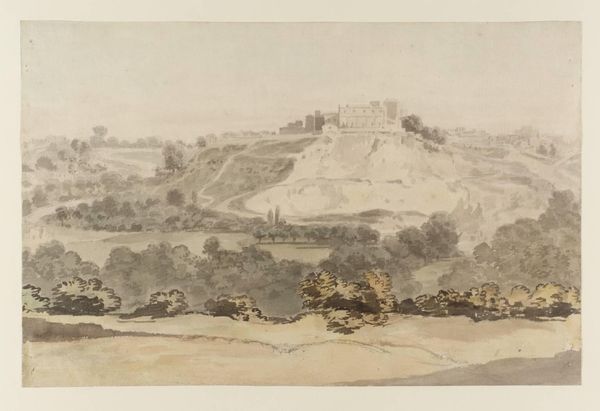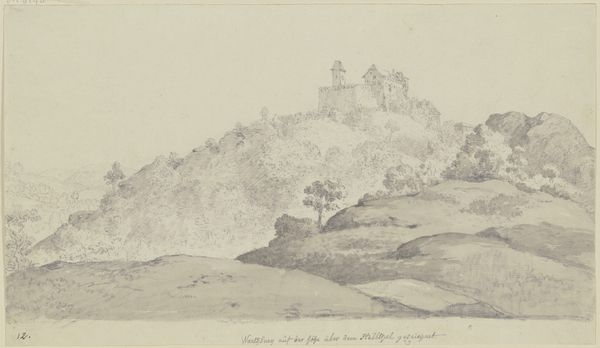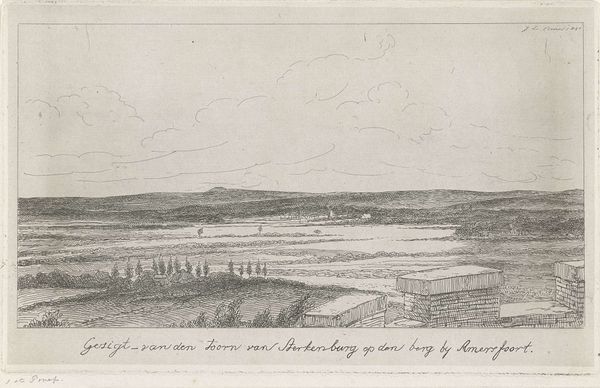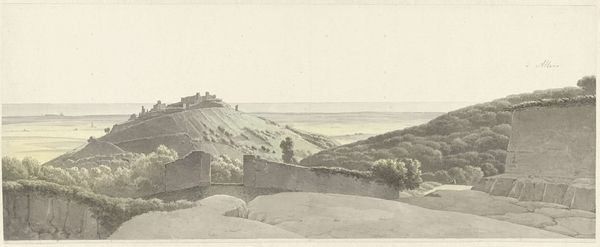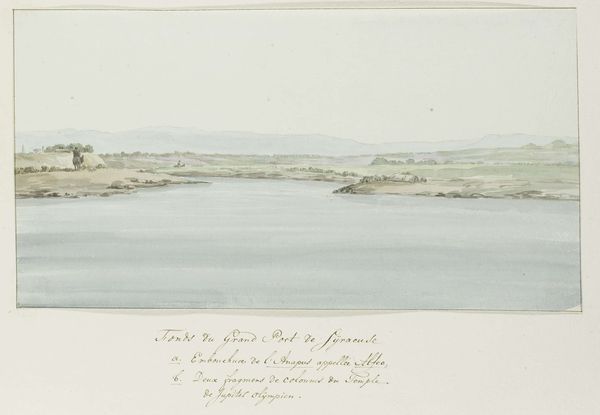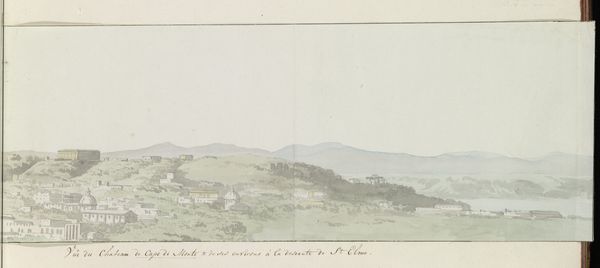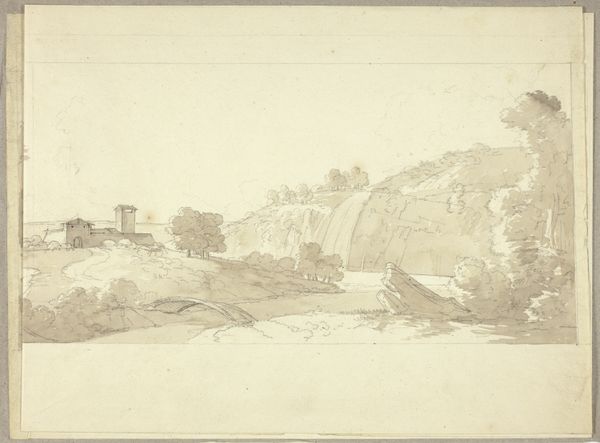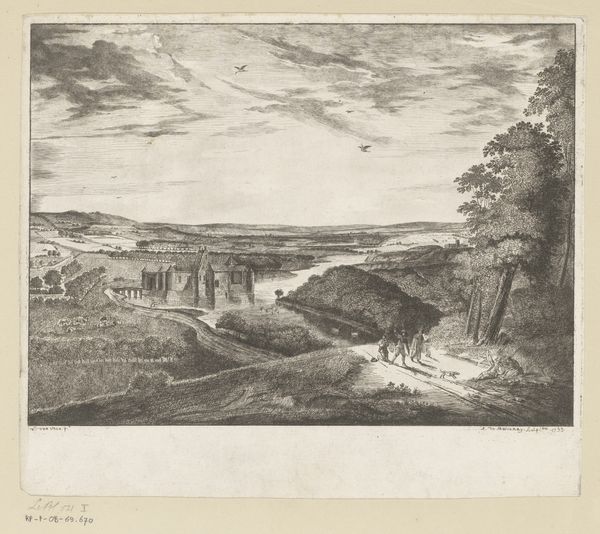
Gezicht vlakbij de kerk van heilige Blasius, gebouwd op resten tempel van Demeter, te Agrigento 1778
0:00
0:00
louisducros
Rijksmuseum
drawing, plein-air, watercolor
#
drawing
#
neoclacissism
#
plein-air
#
landscape
#
watercolor
#
watercolour illustration
#
watercolor
Dimensions: height 253 mm, width 468 mm
Copyright: Rijks Museum: Open Domain
Curator: The first thing that strikes me is the melancholic mood – the muted palette and distant ruins evoke a sense of time and decay. Editor: Absolutely. We're looking at "View near the Church of Saint Blaise, built on the ruins of the Temple of Ceres and Proserpina, at Agrigento." It's a watercolor and ink drawing created around 1778 by Louis Ducros, currently residing here at the Rijksmuseum. Curator: Ducros is presenting this church built upon ruins – ruins of the Temple to Ceres and Proserpina! Consider that layering, that palimpsest of faith, power, and gender. It highlights how dominant ideologies shift over time, often literally built upon the foundations of earlier ones. The very materiality reflects that tension. Editor: You see the layers there. I immediately noticed the washes of color – they speak to me of a kind of rapid production, likely painted "en plein air," on site. This approach emphasizes direct observation, immediate engagement with the landscape, rather than the studio idealization we often associate with Neoclassicism, even if this piece is classified as belonging to this movement. Curator: I understand your focus on production, but isn’t there a narrative about the colonial gaze, in this? European artists, including Ducros, journeying to places like Agrigento in Sicily, to capture and aestheticize ancient sites. The 'ruin' itself becomes a symbol of a lost classical world, which feeds into the contemporary power structures and ideas about European cultural superiority. Editor: Certainly, that context is vital. We have the landscape, ancient ruins, and this immediate painting practice blending into each other. It allows the artist a means of interacting and presenting their world to patrons. And it isn't about perfection or lasting durability here. This piece on paper emphasizes its portability as much as it shows a site with durable materials that has survived for thousands of years. Curator: Thinking about it intersectionally, considering religion and politics within the historical landscape – it enriches our interpretation, doesn’t it? Editor: Agreed, looking at Ducros’ processes of landscape depiction, and how those material choices frame broader systems... both are important perspectives.
Comments
No comments
Be the first to comment and join the conversation on the ultimate creative platform.
